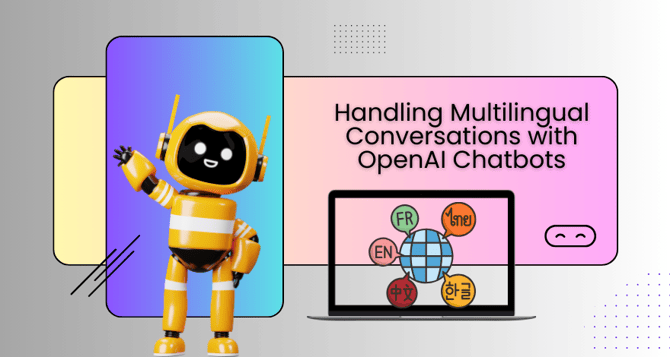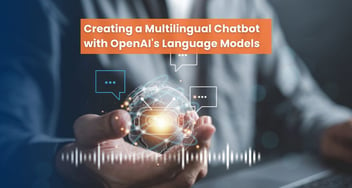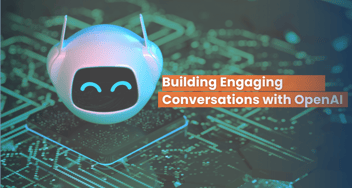Handling Multilingual Conversations with OpenAI Chatbots
Explore the seamless management of multilingual conversations using OpenAI Chatbots. This topic delves into strategies for effective communication across languages, showcasing the versatility of OpenAI technology in enhancing conversational experiences.

In our interconnected world, where global communication knows no borders, the ability to engage with users in multiple languages is a crucial feature for chatbots. OpenAI's advanced language models, like GPT-3, offer exciting possibilities for handling multilingual conversations seamlessly. This article will explore the technical implementations and strategies for creating chatbots that excel in multilingual interactions.
The Importance of Multilingual Chatbots
As businesses and services expand globally, they encounter diverse linguistic needs. Multilingual chatbots can bridge language barriers and provide a more inclusive and user-friendly experience to a wider audience. Whether it's customer support, e-commerce, or educational platforms, chatbots that can communicate in multiple languages are invaluable.
Technical Challenges
Creating a chatbot that can handle multiple languages comes with several technical challenges:
1. Language Detection
The chatbot must identify the language the user is communicating to respond appropriately. This requires robust language detection algorithms.
2. Translation
When a user communicates in a language other than the default, the chatbot should be able to translate the input, generate responses, and translate them back to the user's language.
3. Cultural Nuances
Different languages and regions come with their cultural nuances and etiquette. The chatbot needs to understand and adapt to these differences.
4. Data Availability
The quality and availability of training data vary across languages. Ensuring accurate responses for less common languages can be challenging.
Technical Implementations
1. Language Detection
Implement a language detection module that can identify the language of user input. Libraries like `langdetect` or pre-trained language models like BERT can help with this task.
2. Translation Services
Integrate machine translation services such as Google Translate, Microsoft Translator, or custom translation models. These services can automatically convert user inputs to a common language for processing and then translate the responses to the user's language.
3. Language Models
Use language models like GPT-3 for generating responses in multiple languages. OpenAI's GPT-3 supports various languages and can provide contextually relevant answers.
4. Cultural Adaptation
Customize your chatbot's responses based on the cultural context. This could include modifying greetings, addressing conventions, and understanding regional terms or phrases.
5. Data Augmentation
Consider data augmentation techniques to improve the chatbot's performance in less common languages. This involves generating synthetic data to supplement limited training data for specific languages.
6. User Language Preference
Users can specify or detect their language preferences based on their system settings. This ensures the chatbot communicates in the user's preferred language.
Real-World Examples
1. Customer Support Chatbot
A global e-commerce company uses a multilingual chatbot to provide customer support. When a user queries the bot in French, it detects the language, translates the input to English, processes the request, generates a response in English, and translates it back to French for the user.
2. Language Learning App
An app for learning languages employs a multilingual chatbot to practice conversation in different languages. Users can switch between languages, and the chatbot adapts, providing feedback and correction in the chosen language.
3. Travel Booking Service
A travel booking chatbot offers support in multiple languages. When a user asks about flight options in Spanish, the chatbot provides flight details in Spanish and understands and responds to queries about currency conversion, local hotels, and attractions.
4. Global News Platform
A new platform uses a multilingual chatbot to offer breaking news updates. Users worldwide can inquire about the latest news in their native languages, and the chatbot provides summaries and links in the user's preferred language.
Conclusion
Handling multilingual conversations with chatbots is essential in our globalized world. Developers can create chatbots that excel in multilingual interactions by implementing robust language detection, translation services, culturally adaptive responses, and language models like GPT-3.
Transform Ideas into Reality with Our AI Solutions!
Get custom solutions, recommendations, estimates, confidentiality & same day response guaranteed!
The ability to engage with users in their preferred language enhances user experience, broadens the reach of services, and fosters inclusivity.
As AI and natural language processing continue to advance, the capability to handle multilingual conversations will become even more critical.
Chatbots that can effortlessly communicate in multiple languages will be at the forefront of global business, customer service, education, and cross-cultural communication, making the world smaller and more connected.



.png?width=344&height=101&name=Mask%20group%20(5).png)
















